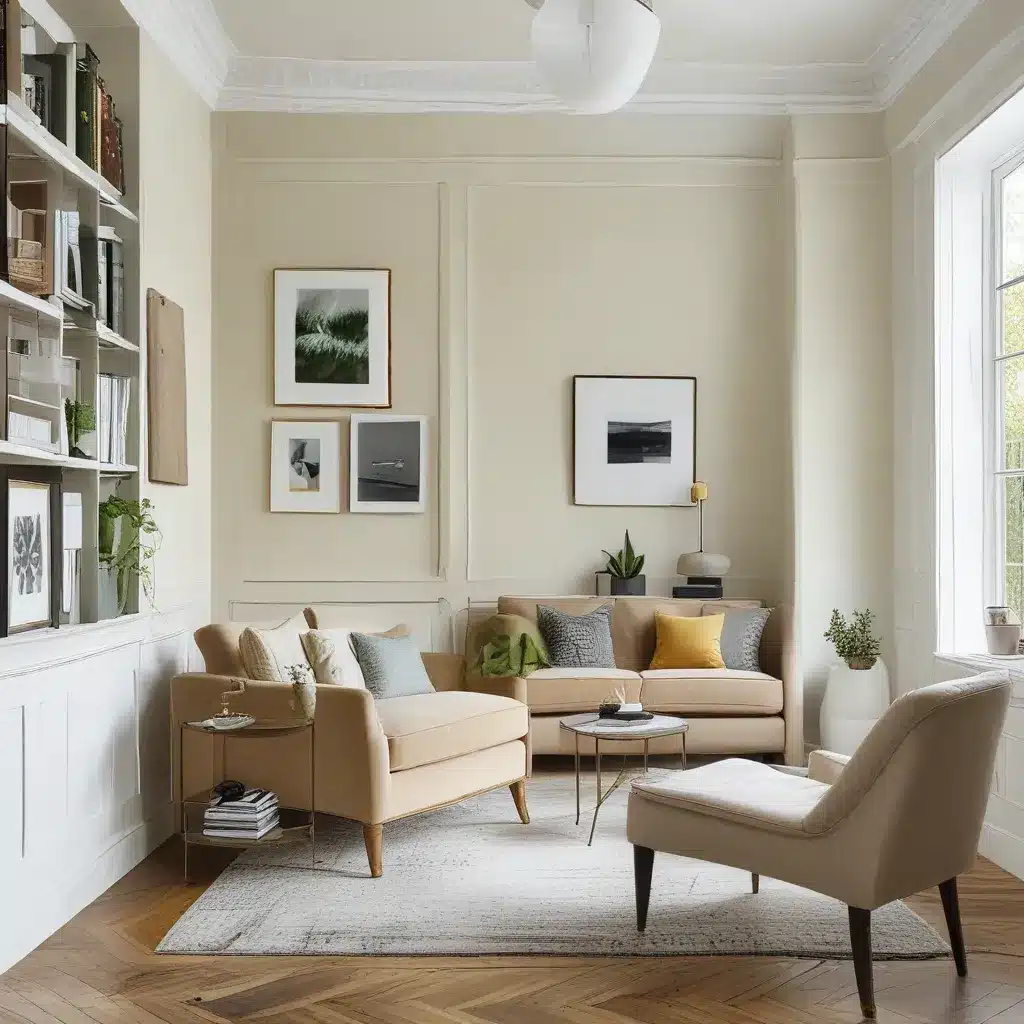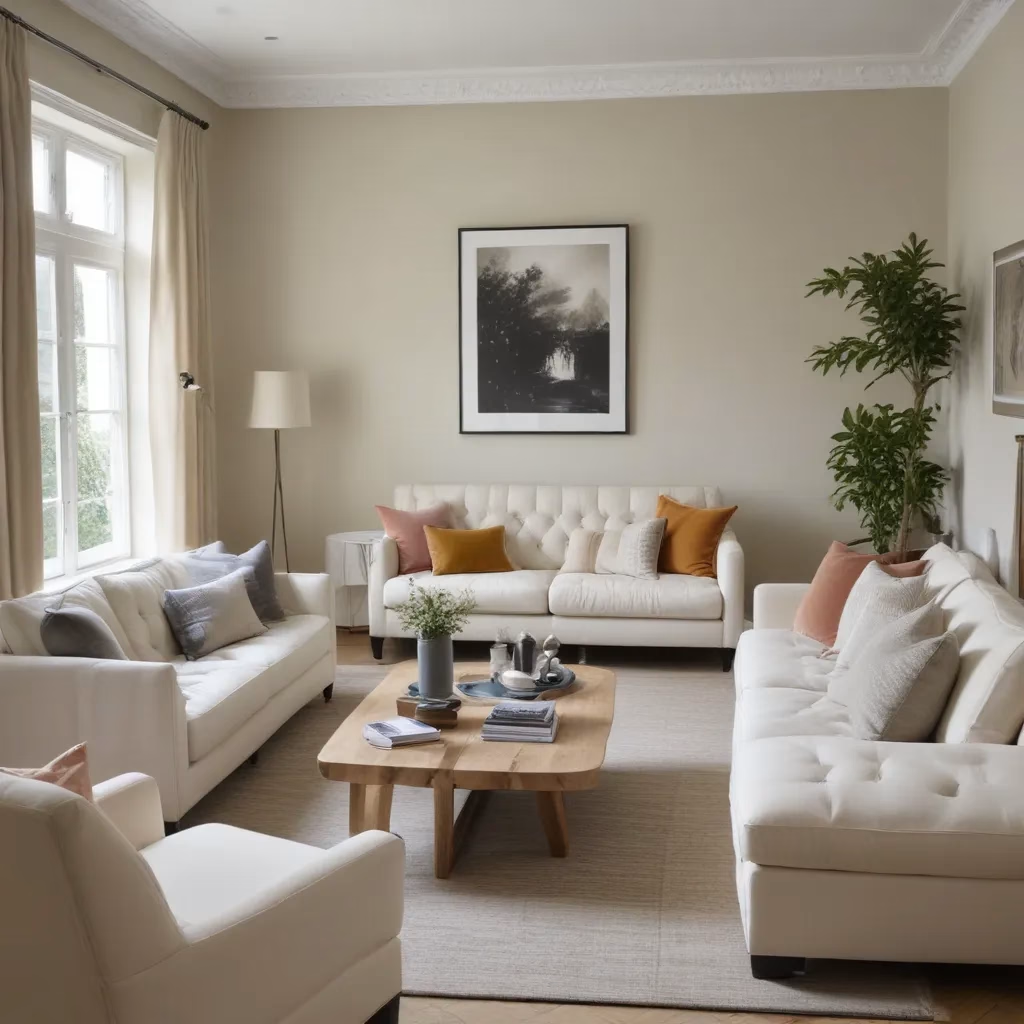Expanding Spaces with Optical Illusions
Have you ever stepped into a dressing room and been surprised by how much bigger it looked in the mirrors? It’s not magic – it’s an optical illusion that interior designers use to make small spaces feel more open and airy. As the chair of interior design and preservation design at the Savannah College of Art and Design, Chi-Thien CT Nguyen, says, “It’s more about perception than reality.” So if you’re living in a cozy flat or a cramped house, don’t worry – there are plenty of tricks up my sleeve to make your rooms look and feel bigger.
Painting for Perception
One of the first things I recommend is rethinking your paint colors. The old rule about painting your ceiling white and your walls a different color doesn’t apply if your goal is to visually expand a room. As D.C. interior designer Kīyonda Powell explains, “You want to create an envelope of space in a small room, so use the same color paint from your baseboards to the ceiling.” This takes away the hard-defined planes that can make a space feel closed off.
Some designers prefer to use lighter paint colors, as they can help mimic and reflect natural light. But others, like Nguyen, embrace dark and dramatic shades. Her theory is that four walls and a ceiling of a deep color like navy can create a sense of vastness where you can’t easily determine the room’s boundaries. It’s like being on a Broadway set – the walls fade away, and you feel like you’re walking into a much larger space.
Murals and Patterns for Expansion
Speaking of Broadway sets, another trick to visually expand a space is to use wall murals, oversized landscape paintings, or big photographs. As Manhattan interior designer Kati Greene Curtis explains, “You’ll feel like you’re walking into the scene.” It creates the illusion that the room extends beyond its physical boundaries.
Wallpaper can have a similar effect, especially patterns that depict interlocking flowers or Chinese-style toiles. “It can really blow things up,” Curtis says. Just be sure to stick to a one- or two-color palette, as a rainbow-hued style can add visual clutter and make the space feel more enclosed.
Reflecting on Reflections
Of course, no discussion of making a room look larger would be complete without mentioning mirrors. As Curtis puts it, “It’s like doubling a room.” But other reflective surfaces, like high-gloss painted ceilings, lacquered furniture, and shiny tile backsplashes, can also create the illusion of volume by casting light around the space. Just make sure there’s adequate natural or artificial light to give those shiny elements something to reflect.
Maximizing Vertical Real Estate
In small rooms, vertical real estate is key – not just for storage, but also for drawing the eye upward. As the British blogger and author Kate Watson-Smyth explains, “Curtains that are mounted near the ceiling as well as kitchen cabinets and built-in shelving that extend all the way up a wall create a feeling of expansiveness.” Even if your ceiling isn’t particularly high, a tall headboard or vertical stripes on the wall or curtains can give the illusion of greater height.
Scaling Furniture Strategically
When it comes to furnishing a small space, the conventional wisdom is often to go for compact, petite pieces. But as Watson-Smyth warns, “If you have a small space and a small sofa, tiny table and bitty chair, it’ll look like a dollhouse.” Instead, she recommends being strategic with scale.
For example, in a small bedroom, you might choose the largest mattress size the room can accommodate, but pair it with a soaring headboard to create the illusion of ceiling height. Wall-mounted bedside sconces can eliminate the need for bulky nightstands and lamps, keeping the overall footprint compact.
In the living room, you might opt for a full-length sofa rather than a loveseat, but make sure it has a low profile. “The greater the distance between the top of the sofa and the ceiling, the taller and larger your room will feel,” Watson-Smyth explains. And when it comes to tables, glass-topped or Lucite options create a sense of airiness and make the space feel less cluttered.
Floating Furniture and Unobstructed Views
Another trick is to avoid pushing all your furniture up against the walls. As Watson-Smyth says, “If you crunch everything up against the wall, it sends the message that there wasn’t enough space to move it forward.” Instead, try floating a piece or two – a low-slung sofa or a curvy chair, for example. This adds vital air and breathing room to the space, and you’ll want to leave at least 18 inches between the floating piece and other furniture to prevent the room from feeling too cramped.
Finally, don’t block the views in a small space, whether you have big windows or not. As Lisa Tucker Cross, who teaches a course on tiny-house design at the Rhode Island School of Design, explains, “Blurring the line between outside and in can really expand your space.” You can even place lots of plants near your windows, so it feels as if your garden begins inside and simply extends.
At the end of the day, the key to making a small room look and feel larger is all about perception. It’s not about knocking down walls or undertaking major renovations – it’s about using clever design tricks to trick the eye and create the illusion of more space. And if you’re ever in need of a custom sofa to anchor your newly expanded room, be sure to check out Sofa Spectacular – they’ve got the perfect pieces to make any space feel more open and airy.




